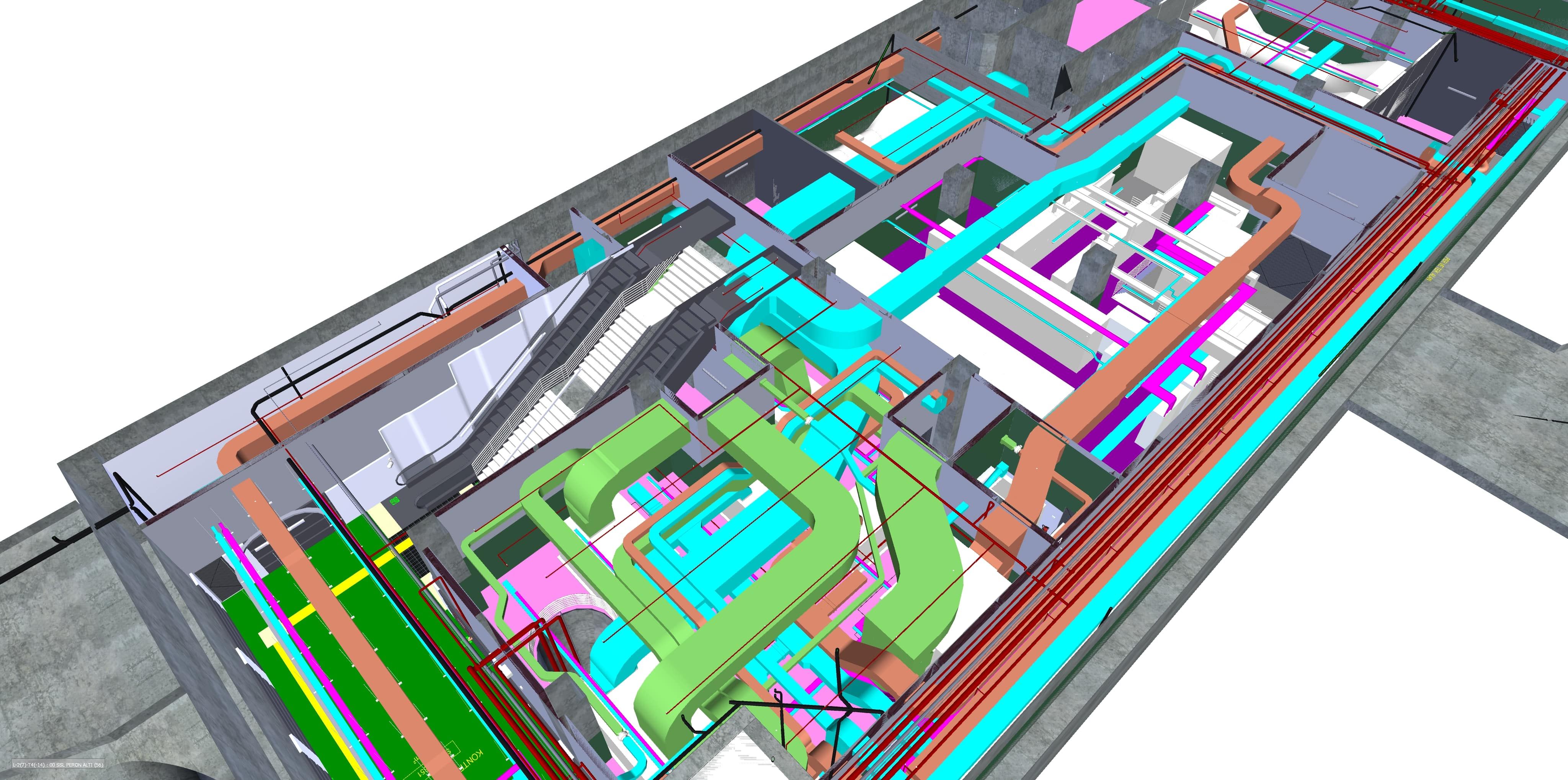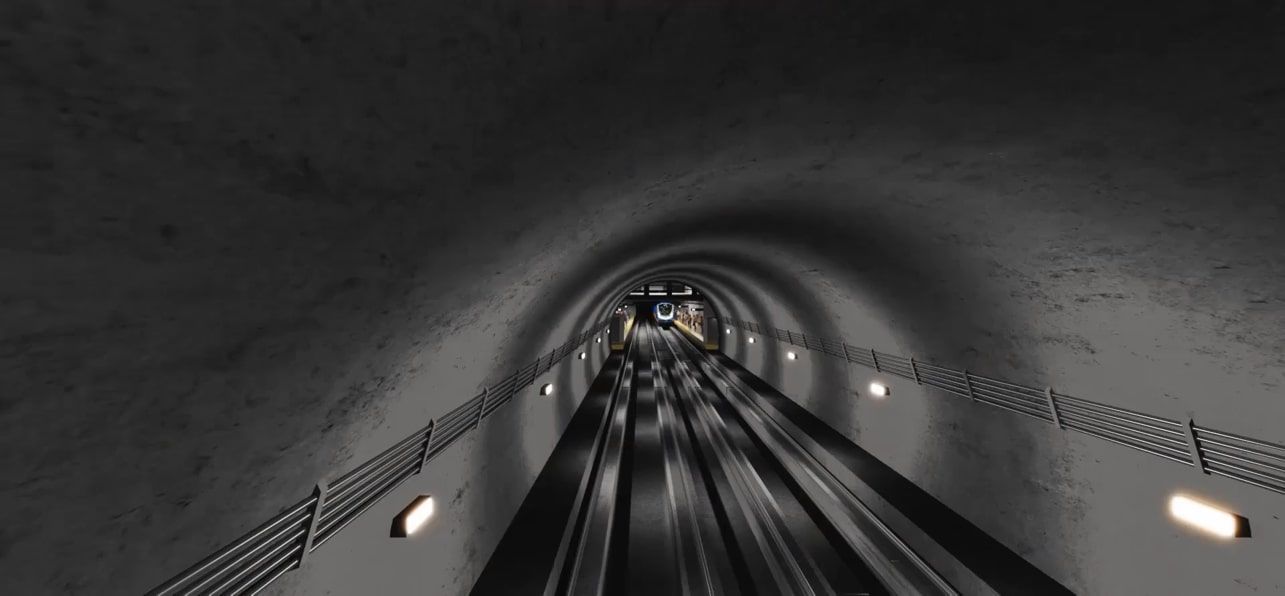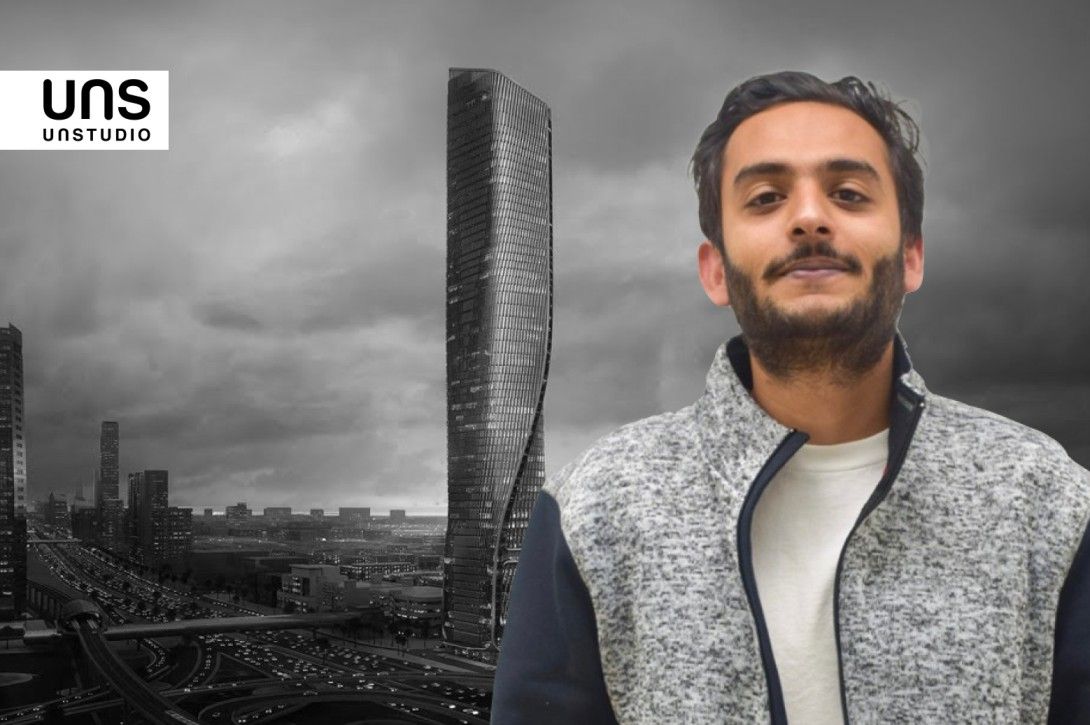PROGRAMS
Join thousands of people who organise
work and life with Novatr.
BIM in Civil Engineering: A Civil Engineer's Successful Journey to BIM
Thet Hnin Su Aung
12 mins read
May 31

We spoke to her about her experience working with BIM and her take on BIM in civil engineering, along with advice for civil engineers who are eager to start a career in BIM.
..as civil engineers, we have a crucial role in construction projects. So if you make your knowledge more digital, more technological, it will be more beneficial for the industry. Make yourself an early adapter and you will see the benefits of this in your future career.
Q1. You’ve worked on some of the biggest construction projects in Turkey! Can you take us through your professional journey up to this point?
I graduated as a civil engineer and started my career as a coordination engineer. I was always interested in BIM (Building Information Modelling). Our company (Prota Group) was an early adopter of BIM in Turkey. We were awarded one of the first BIM public projects in Turkey - a Metro line project and I had the opportunity to work on it. It was one of the earliest and biggest BIM projects in the country and I learnt a lot from this experience. Since then, I have worked on various projects like industrial buildings, metro lines and factory projects.
Now, I am a leader of the BIM team in our company. We, as a BIM team, also work as a research and development team, and always look for new workflows and solutions that technology can bring for us. After all, improving our skills, and following the BIM technology and digital trends, is as important as doing projects.
Q2. Hailing from a Civil Engineering background, how did you decide to specialise in BIM? How did you become aware of it? Surely, it wouldn’t have been as popular back then.
Yeah, exactly. It wasn't very popular.
Funny story – in Turkey, we have a big supermarket chain called BIM. About ten years ago when I had just decided to pursue the BIM field and was talking about how we're making everything digital, people kept asking me if I was referring to the supermarket! So yes, BIM really wasn't popular at that time.
After learning about the terminology (BIM) in my last year of education, I decided to research this topic for my thesis project, with my supervisor’s permission. She approved and that was the starting point. Through literature and case studies, I learnt how people implement BIM, the challenges they faced and the benefits.
Then it became my dream to be a BIM manager. But at that time, there was no project in Turkey. In fact, no one was even familiar with the terminology! I even considered searching for opportunities abroad. However, lucky for me, Turkey’s public authorities learnt about BIM and made it a requirement in tenders. And then, our company was awarded the Metro line project, the first public BIM tender in the country.
So finally, I got the opportunity to change my career from a coordination engineer to a BIM coordinator. Being the first BIM project in the industry, all project participants like the general contractor, the designers (that’s our company), and the consultants and authorities were implementing BIM for the first time. So you can just imagine what challenges we faced. But it was a good experience and a good start to my journey with BIM.

BIM coordination model (Source: Saniye Oktem, Prota Engineering)
Q3. Being the BIM & Technology Coordinator at Prota seems like quite a feat! And a rather exciting role too. What does your typical day at work look like?
Maybe it is better to explain what kind of organizations we have within our company. As it is a design and engineering company, we have many different disciplines all using BIM, such as architectural, structural, MEP and technical teams, providing design and engineering solutions.
We also have a large BIM team. What we, the BIM team, do is support our design teams at all times. The design teams generate their design solutions using BIM software with our support for any software limitations or optimization workflows. On the other hand, there are some specific tasks for BIM teams like 3D coordination. We gather models, conduct clash tests, and distribute the results for further discussions. In some cases, we work closely with general contractors helping them with certain tasks to establish some work structure for their needs. BIM 3D models can be used to map their schedule, run simulations and plan materials and budget.
So we act as a bridge between the design team and the general contractor’s needs by providing necessary information.
As a BIM and Technology coordinator, my main duty is to make sure our digitalization procedure is up to date. I need to be aware of the latest industry trends and learn to implement anything beneficial for our organization.
Q4. What has been the easiest thing about implementing BIM, and what was the hardest?
To be honest, I don't know. Maybe there is no easy task!
I'm just joking.
Of course, some things are easier because this is technology. We create software solutions and define workflows for the designers, and for our team to make the jobs easier. We call this optimization. For example, if there is a task you do repetitively, you can create solutions to automate it and reduce workload. So instead of spending hours or days, you can run a test or complete a task in minutes.
And the hardest?
During the very first BIM project, we were working with people who were used to traditional methods. They had been working with the same traditional methods and were expecting to do the same in a BIM environment. We needed to explain to them that this is a new trend that will give us many benefits.
This is one of the challenging steps because first, we need to admit that we are changing everything. The culture, how we approach the project and how the plan would all change.

3D tunnel model of underground metro line project (Source: Saniye Oktem, Prota Engineering)
Q5. You’ve also been a part of the ‘Women in BIM’ community. Could you tell us a little bit about it? What are the professional challenges women face in the construction industry?
First of all, I am very happy to be part of this community because we share many things within the community. I also get the opportunity to meet women (from the AEC industry) from all over the world. Basically what we do is support, empower and celebrate women in BIM roles and digitalisation roles.
I'm a regional lead for Turkey, and at the same time, a mentor within the community where I am matched with a female BIM professional and support her in BIM roles. I am also on the lookout for women who have a passion for BIM.
We also share our ideas on social, technical and industry issues. As women, we face many difficulties, being part of a male-dominated industry. There are times people discriminate - that this job requires men and it would be impossible for women. You can also be ignored because of your gender!
What’s certain is that I am both a woman and a civil engineer, who has decided to continue her career in this field. We can do everything a man can do in this industry.
Q6. What software do you typically use in your line of work? Do you have a favourite?
Yes, of course. Revit is one of the popular BIM software and a design and modelling tool. In our company, we use Revit a lot. For infrastructure projects, our infrastructure and alignment teams use Civil 3D for the design processes. This is also a BIM software because we can generate geometries with information embedded.
There is the InfraWorks software for infrastructure solutions, generating geometries and coordinating. But basically as a BIM coordination team, we also figure out how the software works as well because you have all the information in one place and you should be able to use these tools for coordination tasks.
We actively use Navisworks for coordination with general contractors, in addition to common data environment solutions or collaboration solutions like BIM 360 docs. In European projects, BIMCollab is actively used. It is a kind of coordination and collaboration tool.
But if you ask what my favourite is, I would say Navisworks because I feel like everything is under my hand and I can check all disciplines and understand all the properties of the model easily.
Q7. What is the role of BIM in Civil engineering? And what is the scope of BIM in the future for Civil Engineers?
I get this question often because we work with 3D geometries (models) and people think it is an architect’s task. But in Turkey, once you graduate as a civil engineer, you can branch out and work in different engineering niches - structural, transportation, infrastructure engineering, or even specialise in hydraulics. They are all different niches with distinct relations to BIM. But I always say that if you are building something, there is a part where you can generate the geometry and collaborate with other disciplines. So civil engineers definitely have a role in this concept.
I have also been involved in landscape projects and the infrastructure part is crucial even when you are constructing your superstructure. With an information model, you can know what infrastructures you have to easily coordinate and solve any issues.
That's why I believe that civil engineers can contribute a lot with their intensive knowledge of design. And if they put this valuable information into their BIM environment, it would be perfect!

3D construction site model of metro line project (Source: Saniye Oktem, Prota Engineering)
Q8. When is the right time for young architecture or civil engineering graduates to start learning BIM? And how should one go about it?
To be honest, there is no age limit. They can learn anytime.
The most important thing is if they do feel really interested in it and plan to turn their career in that direction, then the first thing they need to learn about is the basics of BIM, the concept, and the logic behind BIM. If they are familiar with this, along with software knowledge, then they can improve their skills during the projects throughout their experience.
When they are really interested in and excited about this technology, it is the right time to turn their careers towards BIM.
Q9. What essential skills should a civil engineer have to venture into the BIM field?
In architectural education, students learn a little bit about other disciplines. But in civil engineering education, unfortunately, we do not learn about other disciplines a lot. So that's why the first thing we need before starting work in the BIM environment is to learn coordination and collaboration. We need to learn how to coordinate with other disciplines and use their data, and their solution in our design. So I would say coordination and collaboration skills are highly required in the BIM environment.
Q10. Are certifications necessary for becoming a BIM expert? Do you suggest going for Masters in BIM or for more practical/relevant courses?
It depends. BIM certifications are proofs that you have learnt about this and have the knowledge. And sometimes, there are requirements when submitting tenders to provide a certification. But let us not forget that practical experience is as important.
Master’s degrees can contribute a lot depending on the field. I got my master’s degree in construction management and did my research on BIM. This opportunity allowed me to combine my practical experience with literature by using our then-project as a case study.
With the input from literature, we then managed to improve our workflows so it had a positive impact on our company too. So I strongly suggest getting a BIM or construction/project management master's for those interested in this field. It will contribute a lot.
Q11. Why would you recommend Novatr’s BIM professional course to civil engineering graduates and professionals? And how has your experience been so far with Novatr’s learners?
We have many civil engineers within the course whom I am closely working with. I definitely recommend taking this course because -
● You learn about different software and tools
● How to coordinate and collaborate with architects
● Learn to solve real issues in a project
What is my experience with the learners as a mentor?
I enjoy mentoring and have been doing so in different organizations. I like having interaction with the learners and learning about their ideas. Sometimes during the live discussion sessions, the learners would ask questions that make me think of new and different points. That’s why I like this process.
Q12. Any advice or words of encouragement for aspiring civil engineers who want to delve into the BIM industry?
What I can say is there is no escape from digitalisation and BIM technology in civil engineering. I'm sure that they will face such requirements in their career. So if they start early in their career paths, it would be an advantage.
If you have any interest, please follow it and try to be a part of the BIM community because each stakeholder, each design party, is equally important in this. And as civil engineers, we have a crucial role in construction projects. So if you make your knowledge more digital, more technological, it will be more beneficial for the industry. Make yourself an early adapter and you will see the benefits of this in your future career.

We hope you now have clarity on the offerings of BIM to the field of Civil Engineering. Professionals like Saniye stand as proof that civil engineers can become BIM experts with knowledge of both BIM and their respective disciplines.
Take your first step towards becoming a BIM expert with Novatr’s BIM Professional Course. Head to our Resources page to discover more articles on career insights and BIM.
Join 100,000 designers who read us every month


